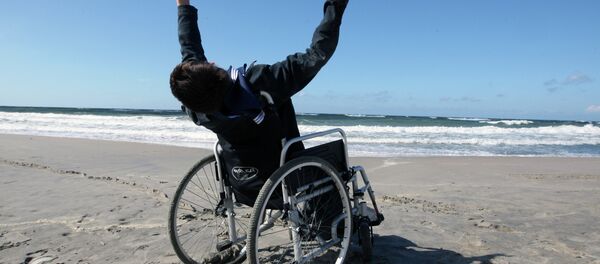MOSCOW, December 3 (Sputnik) — According to a decision by the United Nations General Assembly on October 14, 1992, December 3 is marked as The International Day of Disabled Persons as intended to awaken social tolerance toward disabled persons and to increase their normalized integration into society.
In 1971 the UN General Assembly proclaimed a "Declaration on the Rights of Mentally Retarded Persons."
In 1975 the UN General Assembly proclaimed a "Declaration on the Rights of Disabled Persons", affirming the rights of disabled persons to equal treatment and opportunity.
The UN General Assembly proclaimed 1981 as the "International Year of Disabled Persons."
In 1982 the UN General Assembly formulated the World Program of Action Concerning Disabled Persons.
1983-1992 saw the UN General Assembly proclaiming an International Decade of Disabled Persons, and witnessed the adoption of a Standard Rules for the Equalization of Opportunities for Persons with Disabilities.
On October 14, 1992, the United Nations General Assembly established an International Day of Disabled Persons.
On December 13, 2006, the United Nations General Assembly drafted the Convention on the Rights of Persons with Disabilities, an international human rights treaty to protect the rights and dignities of persons with disabilities.
In 2011 Russia introduced the 5-year "Available Environment" program, directed towards government health reform focusing on the integration of disabled persons into society by 2016.
In September 2012 Russia joined the UN in ratifying the Convention on the Rights of Persons with Disabilities.
On November 21, 2014, the Russian State Duma created 25 laws regarding the political and electoral rights of disabled persons, as well as healthcare, culture, transport and judicial system reforms. The laws are to come into effect in 2016.
According to the Ministry of Labor and Social Affairs, there are currently 12.8 million disabled persons in Russia, of which 2.2 million are in the first disability category, 6.6 million are in the second category and 4 million are in the third. There are 570,000 disabled children. Out of the total number of persons with disabilities, two thirds are pensioners. Out of 2.5 million persons eligible to work, 800,000 are employed.





